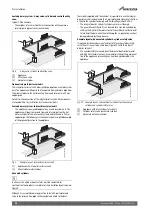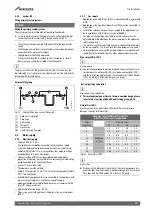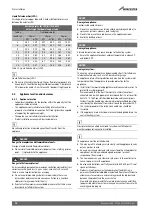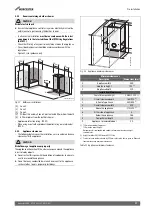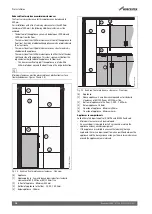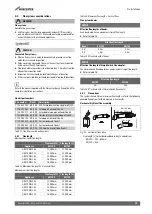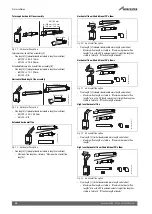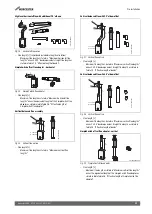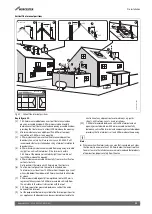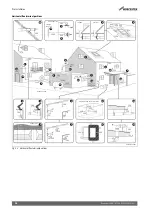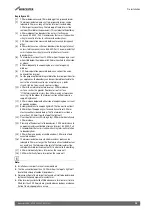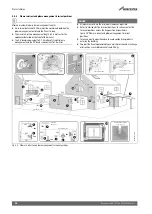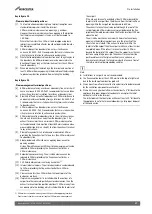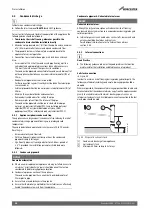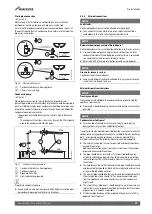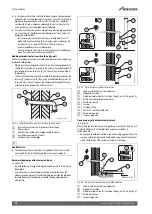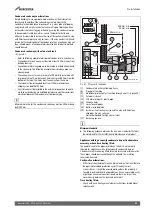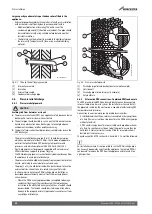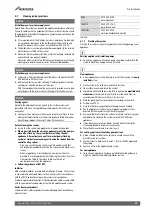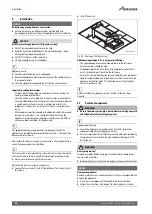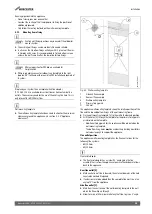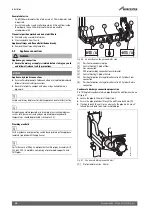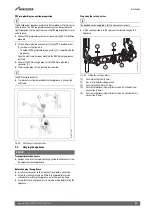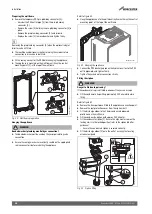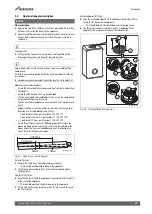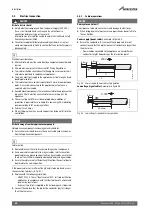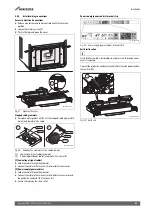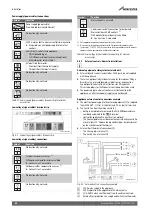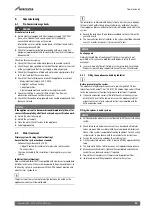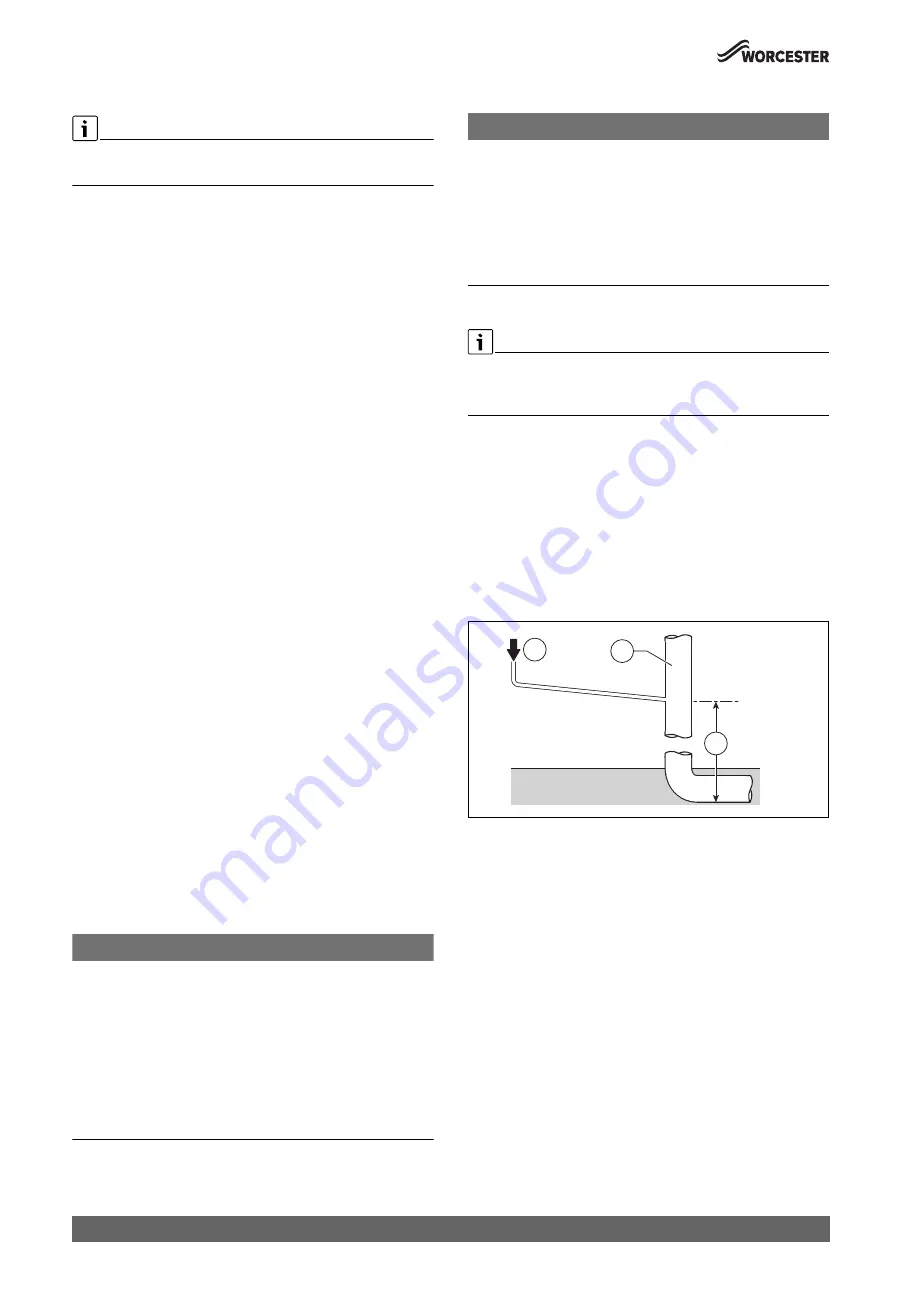
Pre-Installation
Greenstar 4000 – 6 720 891 162 (2020/09)
28
4.5
Condensate discharge
Full details on condensate discharge.
▶ Follow the latest version of
BS6798
and HHIC guidance.
For correct installation and trouble free operation of the appliance the
following advice should be followed:
1.
To minimise the risk of freezing, wherever possible: the
condensate drain should be installed internally.
2. All condensate pipework must ‘fall’ from the appliance by a minimum
of 3° (52mm per metre) to ensure adequate condensate flow.
3. The pipework route must allow air to be supplied back to the
appliance for correct operation.
4. Connection to a rainwater down pipe must include an air break.
Also:
• Assessment of the risk of the condensate pipe freezing must be
carried out and appropriate precautions taken where necessary.
This must take into account the specific site conditions.
• The condensate pipework connected to the condensate drain outlet
on the appliance should have a minimum internal diameter (ID) of
19mm.
• Keep external pipework as short as possible.
Further precautions against freezing must be taken if external pipe
runs exceed 3m.
• External pipework should have a minimum internal diameter (ID) of
30mm.
• Minimise the number of bends and connectors.
• Remove burrs and debris after cutting the pipe.
• Remove surplus solvent from the interior of the pipe.
• The condensate pipework shall be run in standard drainpipe
material, e.g. polyvinyl chloride (PVC), unplasticised poly vinyl
chloride (PVC-U), acrylonitrilebutadiene.styrene (ABS),
polypropylene (PP) or chlorinated poly vinyl chloride (PVC.C).
4.5.1
Appliance siphonic condensate trap
The appliance has a large capacity condensate trap reducing the risk of
condensate discharge pipework freezing up in prolonged cold
temperatures.
The expanded siphonic operation discharges every 10 to 20 minutes.
Resulting in:
• Increased velocity and flow rate.
• With less frequent siphonic actions per hour, the condensate
pipework is empty for longer.
• Significantly reducing freezing potential for a 48 hour period at
-15 °C, provided the installation parameters listed below are
followed.
4.5.2
Condensate pipework
NOTICE
General consideration
▶ Where a new or replacement appliance is being installed, access to
an internal “gravity discharge” point should be one of the factors
considered in determining appliance location.
▶ Condensate pipe connection at the appliance:
The condensate pipe must have a nominally outside diameter of
22mm plastic pipe.
▶ Ensure there are no blockages in the pipe run.
▶ Ensure that the discharge method for the installation can effectively
handle the condensate waste from the appliance.
Condensate pipework - Unheated internal areas
NOTICE
Unheated internal areas.
Although the large volume siphon will reduce the risk of freezing,
condensate discharge may freeze in exposed areas during prolonged
cold temperatures.
▶ Internal pipe runs in unheated areas such as lofts, basements and
garages should be treated as external runs.
For additional information refer to “External Connections”
section 4.5.4.
4.5.3
Internal connections
Good Practice
▶ The following guidance indicates the good practices that must be
maintained for the Installation and Maintenance of a product.
Soil stack connection
Figure 35
In order to minimise risk of freezing during prolonged cold spells, the
following methods of installing condensate drainage pipe should be
adopted.
Wherever possible, the condensate drainage pipe should be routed and
terminated so that the condensate drains away from the appliance under
gravity to a suitable internal foul water discharge point such as an
internal soil and vent stack. A suitable permanent connection to the foul
waste pipe should be used.
Fig. 35 Disposal to soil vent stack
[1]
Condensate discharge from appliance
[2]
Soil and vent stack
[3]
Minimum 450mm and up to 3 storeys
0010012746-002
2
1
3

